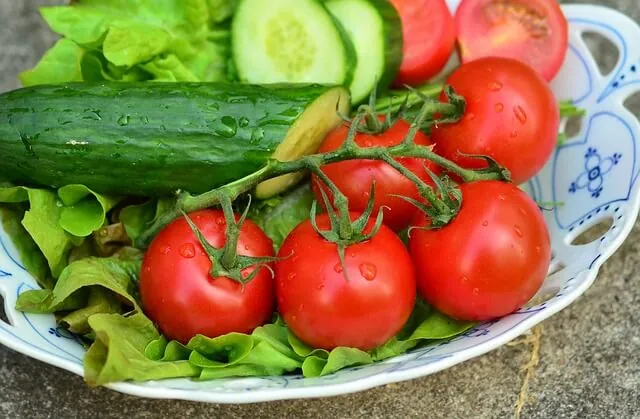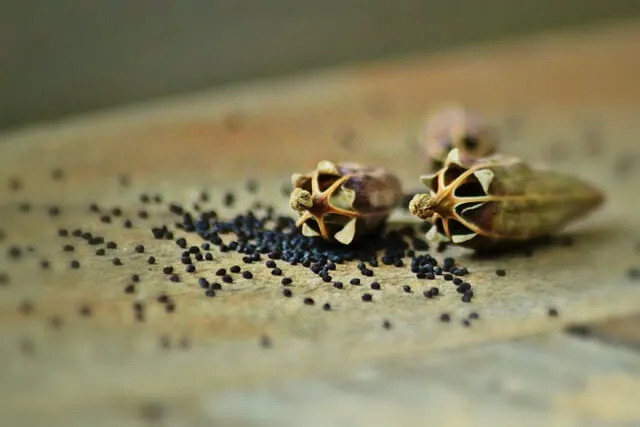Don’t ask why healthy food is expensive. Ask why junk food is so cheap. – Unknown

More and more research are linking chemical pesticides, herbicides, and even fertilizers to diseases, such as certain types of cancers and birth defects. This is the reason why more people are directing their attention towards healthier options – organic food.
What is Organic Gardening?
The term ‘organic’ in farming means employing agricultural practices that avoid the use of chemicals in favor of naturally occurring pesticides, fertilizers and other growing aids.
It was once seen as something practiced only by health nuts. Now, it’s definitely no longer a fad. We want the food we serve to our families to be safe and healthy. Starting an organic garden is a way of taking control. It’s serving our loved ones the good things, and free of the things they don’t need.

Some may argue that it’s impractical and expensive, but the benefits are endless. Years before the invention of chemical pesticides and synthetic fertilizers, organic gardening is the way our great grandparents gardened, the way food was raised.
This year, the IFOAM (International Federation of Organic Agriculture Movements) announced that the global organic market has reached 72 billion USD. What’s more, organic agricultural land has increased to 43 million hectares worldwide.
The United States is the leading market for organic products since 2013, with 24.3 billion euros, followed by Germany (7.6 billion euros) and France (4.4 billion euros). Meanwhile, Australia has the largest organic agricultural area with 17.2 million hectares.
Benefits of Organic Gardening
Organic fruits and vegetables have come into the mainstream diet with a bang. So what exactly are the benefits of growing an organic garden?
Healthier
Starting an organic garden is being free from toxic chemicals. This means your produce won’t have any chemical residue. Organically grown food has also been shown to have a higher vitamin and mineral content.

You also have the added benefit of exercise. Working in your garden will help tone your body and work off extra calories.
Taste
Food scientist Harold McGee explains, since organic plants aren’t protected by pesticides, they ramp up the production of their natural, chemical defenses. These ‘defenses’ translate directly into flavor and aroma, hence the superior taste.

Savings
Instead of buying organic produce from the supermarket, growing your own will save you money. Buying at farmers markets and health food stores can cost up to 50% or more. More so, you won’t have to make as many trips for the perishables.

Environment
Since starting an organic garden requires no chemical pesticides and fertilizers, none of these toxins can run off into the water supply.

Small animals, birds, and beneficial insects are not harmed by chemical use. You’re building up the soil with organic matter, so there is less erosion of topsoil.
Is It Really More Expensive?
Starting an organic garden doesn’t have to mean more expensive.
First, chemical fertilizers tend to cost the same or more as natural ones. With organic gardening, your typical gardening expenses have cheaper, alternative solutions.
For instance, you can eliminate the need for store-bought compost by composting kitchen scraps, which in turn, also helps the environment. Pesticides and herbicides can be eliminated with a more natural method called companion planting.

Companion planting is defined as the selection of certain crop combinations to achieve specific benefits like pest control and enhanced growth. It’s simply planting different garden plant species next to each other.
One of the most popular companion planting methods is called the ‘Three Sisters’, which groups pole beans, corn, and pumpkins or squash.

The pole beans produce nitrogen that the corn consumes. In return, it uses the cornstalks for support. While the corn provides shade to the squash, the latter’s prickly vines smother weeds and deter animal predators from feasting on its companions.
There are a multitude of organic growing techniques out there.
In the long run, as you upgrade your soil quality, apply compost you’ve made yourself, and utilize practical, sustainable gardening practices, your costs will go down.
And the peace of mind you’ll gain as you remove known carcinogens, endocrine disrupters, and other dangerous inert ingredients from your garden? Priceless.
For more information on companion planting, you can check out this blog post.
Three Fundamental Practices
Organic gardening doesn’t require a great deal of training, expensive equipment, or huge amounts of time. It doesn’t mean that your produce will be ‘inferior’ to chemically grown ones. Gardeners work with nature to create an ideal environment for the plants.
Here are three fundamental practices necessary for organic gardening:
Building Organic-Healthy Soil

Considered the heart of organic gardening methods. There is no need for synthetic fertilizers because the continuous cycle of growth, death, and decay replenishes the soil. A healthy, balanced and living soil is the basis of organic growing.
The organic gardener supplements with organic matter in the form of compost and mulch in order to maintain the soil-building organisms.
Avoiding Synthetic Chemicals

Chemicals kill the beneficial micro-organisms, upset the natural balance, and create weak plants. That’s when insects and disease move in. The development and spread of insects and diseases can be controlled through good basic cultural practices.
Employing Plant-Insect Relationship
Learn which insects are helping you and which are helping themselves to your plants. In starting an organic garden, praying mantis, ladybugs, wasps, lacewings, and bees are very efficient allies. Protect and encourage these helpers in your yard.

Birds can also help as they eat many harmful insects. Attract them by providing nesting boxes, nesting material, birdbaths, shrubs and trees for cover. Other beneficial species include toads, skunks, snakes and shrews.
Starting an Organic Garden of Your Own
If you’ve been trying to eat more organic foods, why not grow your own delicious, fresh produce? You’ll have fun and learn at the same time. Roll up your sleeves and start your own organic garden!

For beginners, it’s recommended to start with a smaller garden at first to practice your technique. Try starting an organic garden with plants which are considered to be the easiest to grow. These include:
- Tomatoes
- Beetroot
- Lettuce
- Mint
- Onions
- Dwarf French Beans
Prepare the Soil
To get the best results, make sure the soil is properly conditioned. To gauge the quality of soil, get it tested. There are home testing kits available, or you can send it to your local agricultural office.
If you don’t have time to conduct tests, just fill your soil with plenty of humus, or organic matter. You can mix in compost, leaf and grass, clippings, and manure. Get manure from local livestock that have been humanely or organically raised.
Choose a Good Location
If it’s an herb or vegetable garden you’ve got in mind, you’ll need a site that gets at least six hours of sun per day. It is also important to make sure that the location can offer sufficient draining abilities. Herbs and vegetables prefer well-drained soil.
Seed Starting
Starting your own seedlings can help you save money. You can also be sure that your plants are raised without pesticides or chemical fertilizers.

You will need:
- Seeds
- Containers
- Potting soil mix
- Water
- Sunny area or artificial light source
Potting mixes. Homemade potting mixes are composed of one part finished compost, and two parts growing medium, such as coconut fiber or peat. Commercial potting mixes are available at gardening centers.
Containers. You can start seeds in a wide variety of containers. Just be sure to allow holes for good drainage. Fill your containers with potting soil or seed-starting mix up to about 1 cm from the top.
Water. Before planting your seeds, thoroughly wet the soil with warm water. When planting, the spacing between seeds should be as follows:
- Small seeds — 3 mm (e.g. lettuce)
- Medium seeds — 1 to 1.5 cm (e.g. beets)
- Large seeds — 2.5 cm (e.g. beans)
Cover. Following seeding, your containers should be covered to keep moisture in. You can use plastic, damp newspaper, aluminum foil, etc. Once the containers are covered, they can be set in a warm place for germination.
Sunny area. As soon as the new seedlings emerge they must be given light, either from the sun or by using artificial grow lights.
Transplant. When the plants have developed their first true leaves, you can transfer them into a deeper container, or a garden bed.

Garden Maintenance
Avoiding the use of chemicals does not have to mean a garden full of pests. You can use companion gardening principles.
When it comes to watering, the best time is usually in the morning. Mornings tend to be cool, so the amount of water lost to evaporation is reduced. Pulling weeds may sound like hard work, but it can be a good exercise. You can reduce the number of weeds by applying mulch.
Time for Harvesting
Harvesting the fruits of your labor can bring the best feeling. Aside from enjoying them on the table, fresh organic produce can be great gifts to your neighbors and co-workers. It can be a start of you educating your friends about healthier options.

Have you tried organic gardening? Maybe you have some tips you’d like to share?
References:
Bonn. Frick. Nürnberg. (2015, February 10) Growth continues: Global organic market at 72 billion US Dollars with 43 million hectares of organic agricultural land worldwide. Retrieved from http://www.fibl.org/en/media/media-archive/media-release/article/growth-continues-global-organic-market-at-72-billion-us-dollars-with-43-million-hectares-of-organic.html
Briggs, M. (2012, April 13). Top 10 organic seed suppliers. Retrieved from http://www.theecologist.org/green_green_living/gardening/1310048/top_10_organic_seed_suppliers.html
Christensen, E. (2012, February). It’s True! Organic Fruits and Vegetables Taste Better. Retrieved from http://www.thekitchn.com/its-true-organic-fruits-and-vegetables-taste-better-171698
FoodShare. (2015). Brief Guide to Organic Gardening. Retrieved from http://www.foodshare.net/files/www/Roots_to_Rooftops/2-4-4_Organic_Gardening_Supporting_Materials.pdf
Gucciardi, A. (2011, December 11) Organic Gardening 101: How to Start an Organic Garden. Retrieved from http://naturalsociety.com/organic-gardening-101-how-to-start-an-organic-garden/
Organic gardening Guru. (2015). The Dirt on Growing Organically. Retrieved from http://www.planetnatural.com/organic-gardening-guru/
Rodale. (2011, June 23). What is Organic Gardening? Retrieved from http://www.rodalesorganiclife.com/garden/what-organic-gardening
Yares, K. (2015, February 11). Five Benefits of Growing an Organic Garden. Retrieved from http://www.gardeningknowhow.com/special/organic/five-benefits-of-growing-an-organic-garden.htm
Ziga. (2011, September 15). Does Your Vegetable Bed Look Like a Parking Lot? Retrieved from http://www.permablogger.net/companion-planting-examples/



